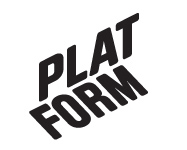

For the duration of the exhibition a table top matching the gallery dimensions was installed into the gallery. Inset into this surface was a slotcar racetrack made by Tyco, a lap counter and two speed regulators for each racing car.
The Tyco track had been selected for its construction ratio of 1:87. Most other producers of racetracks favor a ratio of 1:32, resulting in larger cars that are easier for children to pick up and hold. These larger cars are also more durable – a feature that is important to the children who are the main consumers of these products.
Matchbox, the classic producer of model cars (and incidentally, along with Tyco, a subsidiary of Mattel) also produces a track with a 1:87 ratio. Such a ratio helps participants to identify with the drivers of the cars (who can also be controlled by the participants), and in this way to become more integrated into the race. The aim of the game contained within the sculpture is, more or less, to drive around in circles. The lap counter indicates how many laps have been completed and resets itself to zero after the completion of 50 laps. Although the general aim is to clock as many laps as possible as fast as possible, too much speed, particularly in corner situations, may result in the car spinning out as it loses contact with the racetrack.



 As a four year old Per Hüttner and his family had a car accident. His father was badly injured and died inhospital a few weeks later. Hüttner was brought up by his single
As a four year old Per Hüttner and his family had a car accident. His father was badly injured and died inhospital a few weeks later. Hüttner was brought up by his single












